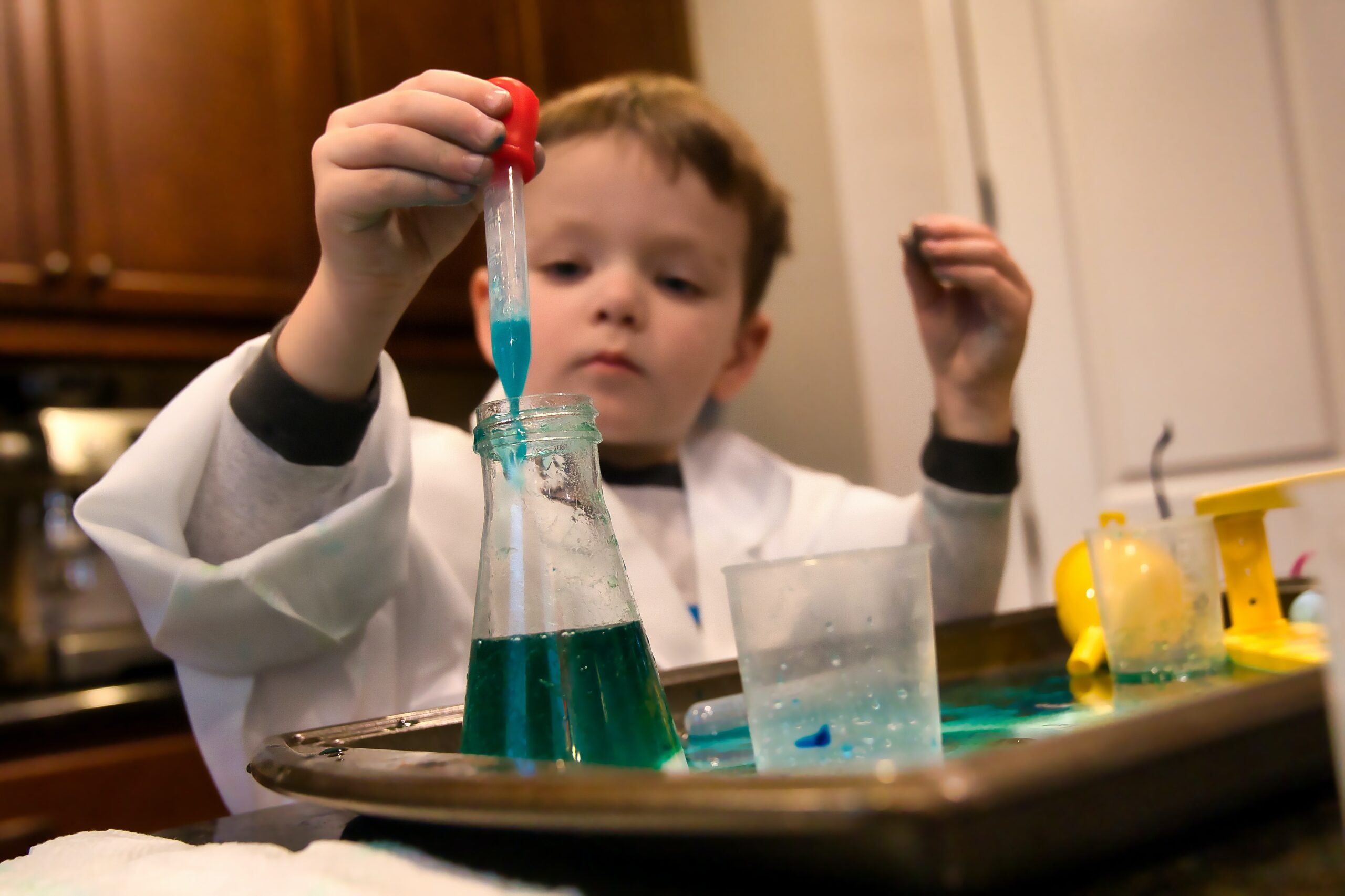A child’s brain develops more in the first five years of life than at any other point. In fact, by the age of five, your child’s brain has already reached ninety percent of its adult size, with critical neuron pathways being formed every second. These early years are the best time to foster a love of learning in your child. Outside of reading, math, and writing, fun early science lessons are a great way to engage young learners. The five activities below are perfect for preschool learners and mostly use things you probably already have around the house.
1. Make a Milky Rainbow
Explore the concept of surface tension while creating a swirl of rainbow colors with this easy-to-complete experiment.
What You Need:
- Tray or baking pan with high sides
- Whole milk
- Food coloring
- Liquid dish soap
What to Do:
- Pour milk into the tray or baking pan so that the bottom of the container is covered with milk (around ¼” of milk should be enough).
- Add 5-10 drops of different colored food coloring onto the milk in different spots.
- Add drops of liquid dish soap directly onto the drops of food coloring and watch the rainbow! The soap breaks the surface tension of the milk, sending the food coloring swirling.
2. Make A Balloon Rocket
This fun activity exploring motion is easy to do and is tons of fun for kids of all ages.
What You Need:
- String or yarn
- Plastic straws
- Balloons
- Painter’s tape
What to Do:
- Cut a piece of string long enough to run wall-to-wall across the room that you will be using for the experiment.
- Using painter’s tape, attach one end of the string to one wall.
- Run the string through the straw before securing the string to the opposite wall with painter’s tape.
- Blow up a balloon and pinch the end closed with your fingers to keep the air in.
- Tape the balloon to the straw. Make sure that the neck of the balloon is pointing in the opposite direction from the direction that you want the balloon to travel in.
- Let go of the balloon and watch your rocket fly!
Expansion Ideas:
To expand the project, try out different types of string (dental floss, fishing line, yarn, thread, etc.), different sizes of balloons, different types and lengths of straw, and different string angles.
3. Baking Soda and Vinegar Volcano
Play with chemical reactions in this classic experiment.
What You Need:
- A tall glass
- A tray or baking pan with high sides
- Baking soda
- Vinegar
What to Do: or
- Place the tall glass in the center of a tray or baking pan with high sides.
- Fill the glass to around ¼ full of baking soda.
- Pour in some vinegar and watch the eruption!
4. Explore Your Sense of Taste
Learning about one of the five senses that we use to process the world is a perfect way to introduce young children to science.
What You Need:
- A variety of foods with strong flavors. Some ideas are:
- Lemons
- Chocolate
- Parsley
- Pepperoni slices
- Potato chips
What to Do:
- Cut food into bite-sized portions (make sure kids don’t see what you’re preparing).
- Blindfold kids and give them each a bite of one food. See if they can guess what it is!
- Repeat for remaining foods.
5. Make Oobleck
Explore states of matter with Oobleck, a fun substance that displays the properties of both a liquid and a solid.
What You Need:
- 1 part water
- 2 parts cornstarch
- Food coloring (if desired)
What to Do:
- Mix the water, cornstarch, and food coloring.
- Let kids dig their hands in and watch them be amazed.
Expansion Ideas:
To build text-to-life connections, read “Bartholomew and the Oobleck” by Dr. Seuss and go with green food coloring.
These fun and easy-to-implement science experiments are a great way to engage early learners in science. Use the expansion ideas above, or create your own ways to connect the concepts above to real-world situations to maximize your child’s learning. Remember, the days are long, but the years are short. Use the first five years wisely.
*Photo by Clint Patterson on Unsplash
